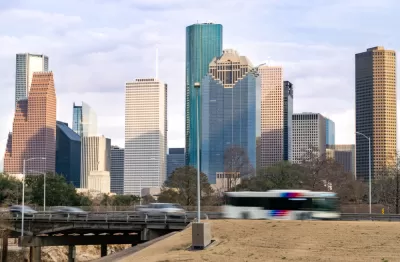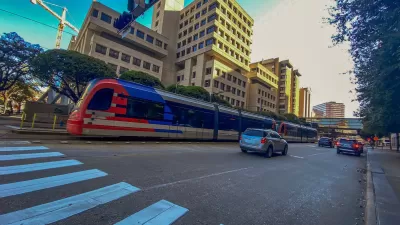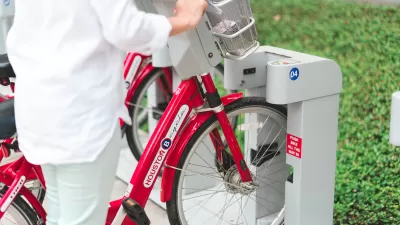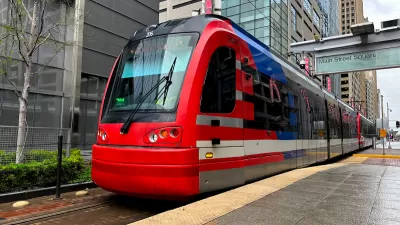The agency will assess ways to more effectively use its surface parking lots and encourage more mixed-use development near transit hubs.

Houston’s Metropolitan Transit Authority is considering developing some of its ‘park and ride’ properties(largely surface parking lots) into housing and commercial space, reports Dug Begley in the Houston Chronicle.
“The [Metro] board in August created a subcommittee tasked with joint development and land use, which met for the first time Sept. 14. Staff, meanwhile, issued a request for information to developers, the first step in seeing if any have ideas for using Metro spaces.” As Begley writes, “If Metro can find private partners to better use its land, or build on it while maintaining its use for transit, the agency can add more value than just concrete lots, and better connect its transit centers to the surrounding area.”
Encouraging development on properties adjacent to transit stations is nothing new for other agencies, such as Dallas Area Rapid Transit, which instituted a transit-oriented development policy in 1989. “Critics, however, point out that for all of DART’s attempts to drive living and retail space toward its 93 miles of light rail lines, its ridership has not benefited. A station in the developed enclave of Las Colinas, aimed at bringing urban design to a suburban setting, is among the agency's lowest in terms of daily riders.”
Elsewhere, TODs have had more success. “Washington Metropolitan Area Transit Authority long has sought out deals that put transit stations into core shopping and residential areas,” Begley points out, and the practice of integrating transit stations with other uses is common in other countries.
FULL STORY: Metro eases into land development, aiming to connect transit, housing and jobs

Study: Maui’s Plan to Convert Vacation Rentals to Long-Term Housing Could Cause Nearly $1 Billion Economic Loss
The plan would reduce visitor accommodation by 25,% resulting in 1,900 jobs lost.

Placekeeping: Setting a New Precedent for City Planners
How a preservation-based approach to redevelopment and urban design can prevent displacement and honor legacy communities.

Using Old Oil and Gas Wells for Green Energy Storage
Penn State researchers have found that repurposing abandoned oil and gas wells for geothermal-assisted compressed-air energy storage can boost efficiency, reduce environmental risks, and support clean energy and job transitions.

Homeowners Blame PG&E for Delays in ADU Permits
The utility says it has dramatically reduced its backlog, but applicants say they still face months-long delays for approvals for new electrical work.

Rethinking Wildfire Defense: How a Landscape Approach Can Protect Neighborhoods
Post-fire analysis of the Eaton Fire reveals that a landscape approach — including fire-resistant vegetation, home hardening, and strategic planning — can help reduce wildfire risk, challenging assumptions that trees and plants are primary fire hazards.

Scientists Studying Artificial Reefs as Flood Mitigation in Great Lakes
Artificial reefs could offer a ‘softer’ flood management and erosion solution that doesn’t disrupt the flow of sediment.
Urban Design for Planners 1: Software Tools
This six-course series explores essential urban design concepts using open source software and equips planners with the tools they need to participate fully in the urban design process.
Planning for Universal Design
Learn the tools for implementing Universal Design in planning regulations.
Borough of Carlisle
Caltrans
Heyer Gruel & Associates PA
Institute for Housing and Urban Development Studies (IHS)
City of Grandview
Harvard GSD Executive Education
Salt Lake City
NYU Wagner Graduate School of Public Service
City of Cambridge, Maryland





























